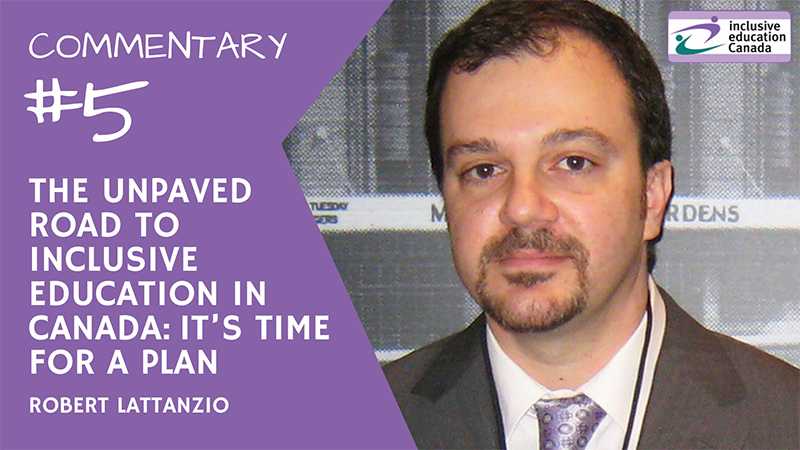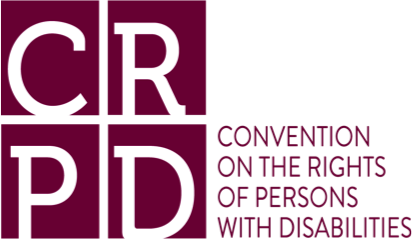 National Inclusive Education Month Commentary #5
National Inclusive Education Month Commentary #5
By Robert Lattanzio, Executive Director, ARCH Disability Law Centre
Upon reflecting on my education law practice in Ontario that spans about 15 years, my realization becomes unfortunately clear; not much has changed in the lives of students with disabilities during that time.
ARCH Disability Law Centre advocates on behalf of students with disabilities to access appropriate accommodations and supports within a welcoming and inclusive learning environment and to benefit from all the rights that are afforded to them. The issues raised by my clients today have not substantially changed from when I began. However, during that time period, there have been significant developments in human rights law and disability rights. The Supreme Court of Canada released a positive, robust and clear decision about the heightened human rights obligations that school boards must adhere to when accommodating students with disabilities[1]; the Human Rights Tribunal of Ontario adopted a direct access model leading to several positive decisions related to education;[2] amendments to the Safe Schools Act now prohibit a particular practice of exclusion and introduced mitigating factors when deciding on disciplinary measures that consider disability; [3] and the United Nations Convention on the Rights of Persons with Disabilities (CRPD) was ratified by Canada which clearly articulates an obligation by government to adopt an inclusive education model.[4]
The United Nations CRPD Committee’s General Comment No. 4 (2016) on the right to inclusive education on article 24 provides the following insight which is wholly applicable in our Canadian context:
Ensuring the right to inclusive education entails a transformation in culture, policy and practice in all formal and informal educational environments to accommodate the differing requirements and identities of individual students, together with a commitment to removing the barriers that impede that possibility. It involves strengthening the capacity of the education system to reach out to all learners. It focuses on the full and effective participation, accessibility, attendance and achievement of all students, especially those who, for different reasons, are excluded or at risk of being marginalized.[5]
 The CRPD Committee continued to stress that inclusion “seeks to enable communities, systems and structures to combat discrimination, including harmful stereotypes, recognize diversity, promote participation and overcome barriers to learning and participation for all by focusing on the well-being and success of students with disabilities.”[6] This can only be achieved by an in-depth and fundamental transformation of our education system including the laws and regulations that create the framework, funding, policy, and monitoring and accountability mechanisms.
The CRPD Committee continued to stress that inclusion “seeks to enable communities, systems and structures to combat discrimination, including harmful stereotypes, recognize diversity, promote participation and overcome barriers to learning and participation for all by focusing on the well-being and success of students with disabilities.”[6] This can only be achieved by an in-depth and fundamental transformation of our education system including the laws and regulations that create the framework, funding, policy, and monitoring and accountability mechanisms.
Children with disabilities are often excluded from the benefits of an inclusive education system as a result of a poor accommodation process, a lack of supports, explicit exclusion, and poor leadership. It follows that by tackling these issues we will be taking strides toward inclusion. However, this by itself is not sufficient. The only way to achieve a fully inclusionary education system that appropriately supports all children is by explicitly rejecting educational philosophies which prize segregation over inclusion. Indeed many studies demonstrate that an inclusionary approach to education often has significant positive results for students. In one large scale international review of trends in “special education”, it was found that “[t]he evidence of inclusive education is mixed but generally positive, the majority of studies reporting either positive effects or no differences for inclusion, compared with more segregated provisions”.[7]
Moreover, a full adoption of a rights based framework is fundamental to any reforms.
A rights based approach to education must be inherently inclusive. Traditional ‘special’ education and the jargon and approaches that come with it should be jettisoned. Terms such as “special education” and “exceptionalities” that are used in Ontario, and regulatory processes to identify and place students, should be replaced with more inclusive and rights based language and approaches.
Moreover, focus must be given to the important reality that students with disabilities that identify as Indigenous, as racialized, or from lower socioeconomic status experience much higher rates of segregation than the average population. A report by the Toronto District School Board demonstrated that “[s]tudents who self‐identified as Black were over‐represented in congregated Special Education…[and] notably under‐represented in Gifted, IB, AP, Elite Athlete, and slightly under‐represented in French Immersion” and are the “largest racial category represented in Special Education schools (30.2%) where they are over doubly represented.”[8]
 ARCH in partnership with Brock University, Community Living Ontario, Inclusive Education Canada and Western University of Ontario, conducted province-wide research on inclusive education in 2017 and will release a report summarizing some of our findings in the Spring of 2018. The results of that research will provide yet another example of why significant reforms are needed.
ARCH in partnership with Brock University, Community Living Ontario, Inclusive Education Canada and Western University of Ontario, conducted province-wide research on inclusive education in 2017 and will release a report summarizing some of our findings in the Spring of 2018. The results of that research will provide yet another example of why significant reforms are needed.
It is time for an overhaul. Canada lacks a National Strategy on Inclusive Education; there is currently no plan for Canada to fulfill its obligations on inclusive education pursuant to the CRPD. Provinces need to commit to overhauling archaic legislative frameworks that are having egregious impacts on students with disabilities. Substantial reforms to legislative, regulatory and funding frameworks are needed now.
References:
[1] Moore v British Columbia (Education), 2012 SCC 61 [2012] 3 SCR 360 [Moore].
[2] For example, see: RB v Keewatin-Patricia District School Board, 2013 HRTO 1436; M.O. v. Ottawa Catholic District School Board, 2010 HRTO 1754.
[3] Behaviour, Discipline and Safety of Pupils, O Reg 472/07; Access to School Premises, O.Reg. 474/00.
[4] Convention on the Rights of Persons with Disabilities, GA Res 61/601, UNGAOR, 61st Sess, Supp No 49, UN Doc A/61/49 (14 January 2007) 65 at art 24(1) [CRPD].
[5] Committee on the Rights of Persons with Disabilities, “General comment No 4 (2016) on the right to inclusive education”, General Comment on United Nations Convention on the Rights of Persons with Disabilities, (2016) CRPD/C/GC/4 [General Comment] at 2.
[6] Ibid.
[7] David Mitchell, Education that Fits: review of international trends in the education of students with special needs education, online: New Zealand Government Education Counts < https://www.education counts.govt.nz/publications/special_education/education-that-fits-review-of-international-trends-in-the-education-of-students-with-special-educational-needs/chapter-thirteen-teacher-education>.
[8] Toronto District School Board, “Facts, Selected School-Wide Structures: An Overview”, Issue 9, December 2013 (TDSB) at 3.
 Robert Lattanzio is the Executive Director of the ARCH Disability Law Centre in Ontario and a member of the Network of Associates of Inclusive Education Canada.
Robert Lattanzio is the Executive Director of the ARCH Disability Law Centre in Ontario and a member of the Network of Associates of Inclusive Education Canada.
